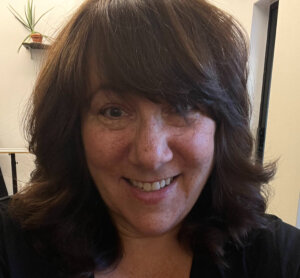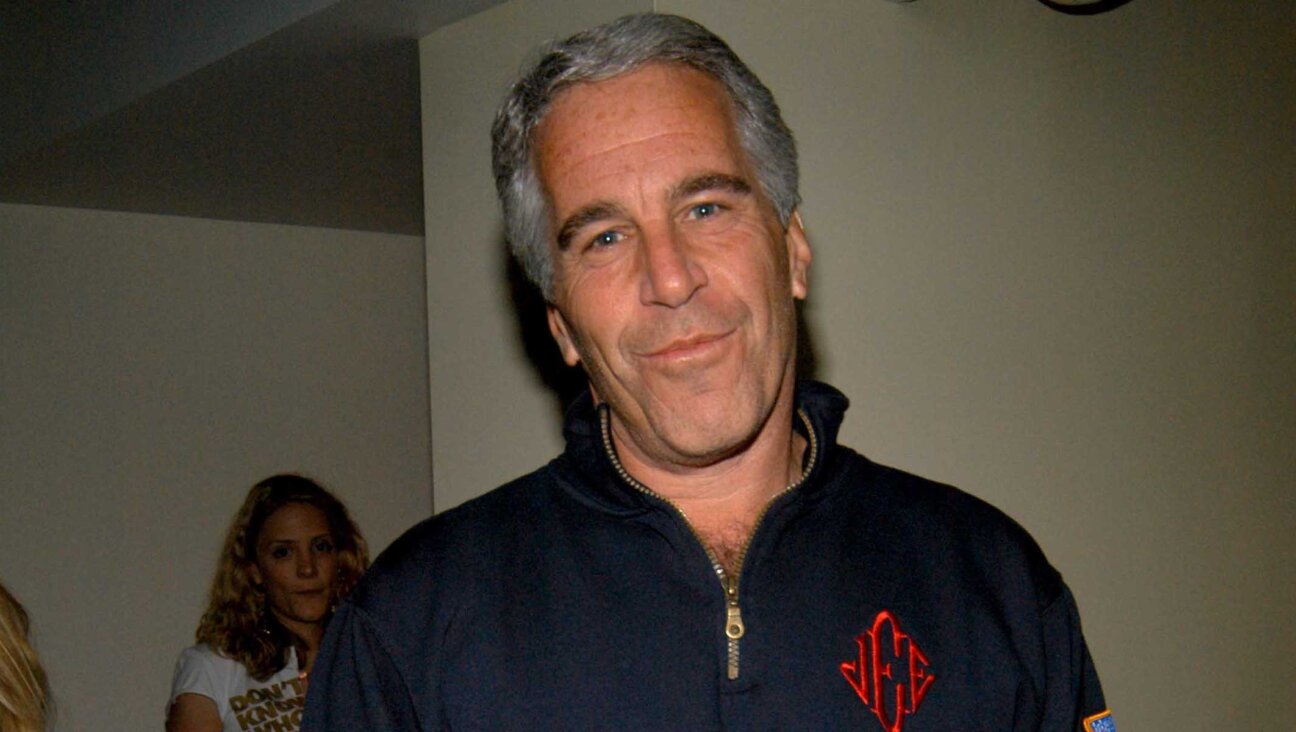Is the ‘Man Seder’ Wrong?

Graphic by Angelie Zaslavsky
Courtesy of Reuven Spolter // A scene from a ‘man seder’ in Oak Park, Michigan
First there was the feminist seder. Now there is the “man seder,” many of which are centered around beer and steak.
Versions were held in five Orthodox synagogues this year, with one attracting as many as 500 men. But conflict over the idea of a “man seder” is causing nearly as great a split in perspectives as there was as the Israelites fled Egypt.
Rabbi Reuven Spolter is the man behind the “man seder.” He came up with the idea after his wife returned home from a Jewish federation-sponsored women’s pre-Passover seder. He held the first “man seder,” as he dubbed it, a decade ago at his synagogue in suburban Detroit, Young Israel of Oak Park, as a way to teach men how to better lead their own family seders while enjoying steak, beer and the camaraderie of friends.
Spolter and his family made aliyah in 2008 and the next Passover, the Detroit branch of yeshiva Aish Hatorah took up the shank bone and began running the men-only seder in the motor city. This year there were also “man seders” in Orthodox synagogues in Potomac, Maryland, which had some 500 participants; Houston; Chicago; and greater Atlanta.
His “man seder” concept “was all about giving tips for running a better seder,” Spolter told The Sisterhood. He now works as a Jewish studies instructor at Orot College of Education in Elkanah, Israel, and as overseas coordinator for the rabbinic organization Tzohar. “It was all about an educational experience. There was no agenda per se.” He said he doesn’t understand how anyone could object to his approach. “I don’t think that this is a controversial program.”
Others disagree, and criticized it in a Facebook group called “I’m also fed up with the way women are treated in Orthodoxy,” where one member, whose parents belong to the Atlanta-area synagogue that held a “man seder” wrote that the congregation “sunk to a new low.” An occasionally snarky discussion of the relative merits of men’s only — and women’s only-model seders ensued. And Spolter’s reaction was fierce. On his blog “Chopping Wood,” he wrote that the tone of the FB group is “appalling” and it is the most “negative, nasty, distasteful group on Facebook.”
“It’s a shame when stereotypes are reinforced like this,” said Deborah Meyer, executive director of Moving Traditions, an organization focusing on issues of gender in Judaism, which has developed single sex programs for teenage girls and boys to keep them engaged after bat and bar mitzvah.
“Man seders” are “completely unnecessary,” said Letty Cottin Pogrebin. “Seders for years have been men’s affairs. The women are silent, women make and serve the food. This has been men’s seders for generations,” said Pogrebin, who is a creator of the original feminist seder. Emergence of the “man seders” is part of what she calls “the stolen spotlight syndrome.”
“I attribute it to a real discomfort in the culture when women are catching up,” she told The Sisterhood. “Because that’s what women’s seders have been about. We didn’t want to be separatists, but show that there are more women to highlight than the four [Biblical fore-]mothers. Our seders also underscore that our mothers were in the kitchen preparing the food, they were serving the food and not reclining. We were making up for that, filling in the blanks. There’s no need to fill in blanks for men, because it’s all there.”
No one is certain just how many feminist and women’s seders took place this year. They are held at Jewish community centers and federations, as well as synagogues and in private homes. The first, created in 1975 by Pogrebin and a small group of other Jewish women deeply involved in the feminist movement, created modern traditions that have subsequently become widely observed, including discussing the four daughters and their questions, rather than those of the traditional four sons, and re-casting the conventional 10 plagues as an examination of the 10 plagues faced by women. These seders, which hew to the traditional structure but have unique Hagaddot and other elements, are a way of adding women’s voices into conventional Jewish history and liturgy, all of which had been written by men.
The Manhattan Jewish feminist group Ma’yan this year held a 20th anniversary celebration of its first, which was held in 1994 and continued before every Passover through 2006. In its heyday, attendees (mostly women, with a sprinkling of men,) filled a downtown Manhattan catering venue to capacity with 500 people on each of four nights.
The “man seder” idea is “a little tit-for-tattish,” said Ma’yan’s founding executive director, Eve Landau. The feminist seders “came out of a movement, not ‘my wife had an experience and I want to have one with my buddies.’” She said that the “man seder” is “a class in leading the seder, not transforming it to make the community more open or inclusive or welcoming. Their purpose is different. We’re not on the same page.”
Men of Reform Judaism have also been doing men’s seders since 2007, said Stuart Leviton, an L.A. attorney who is president of the organization, which has 125 chapters around North America. His group does not track how many of their seders take place each year, but Leviton estimated that this year there were 25 to 35.
MRJ’s approach “uses the seder format as a springboard for discussion, a tool or strategy to bring men together and talk about issues relevant to them,” Leviton said. Much as feminist seders do, MRJ’s talk about 10 plagues for Jewish men today, which might be health issues or family dynamics or work stresses, “personal issues that most men deal with,” he said.
They were born out of a sense of male disempowerment within the movement, said Leviton. “For some men the last 40 years of change has been a challenge or a struggle,” he said. “Men can’t ascribe to anyone else why they feel disconnected, but I’m convinced part of that conversation has to be about recognizing gender difference. We need to meet the needs of men and women differently and doing at least some gender-specific programming. It will allow for more effective engagement of Jewish men.”
“I find for men, who aren’t necessarily open or vulnerable, that if you create a safe men-only space, they will start to open up and talk about what’s going on in their lives in a way they won’t normally. It’s a strategy for getting men to open up in a safe space, in a Jewish space.”
That makes the MRJ men’s seders closer, in many ways, to the feminist seder’s approach.
But the Orthodox-created “man seders” are far more conventional. And Spolter was angry about having them criticized. In his blog post eviscerating critics he wrote:
Instead of whining, why not approach your rabbi about creating a similar program for women? I doubt that there would be steaks and beer — maybe smoked salmon and grilled vegetables (which the Jews ate in Egypt as well). But that would entail work, involvement, and a positive attitude, none of which are necessary in order to rant on a Facebook page.
Pogrebin said of the “man seders,” it is “just a ghetto seder.”
“Their seder segregates, the feminist seder remediates,” she told The Sisterhood. “Ours is a historical re-claiming. People may think that they’re doing the same thing as we are. But they’re not.”






















